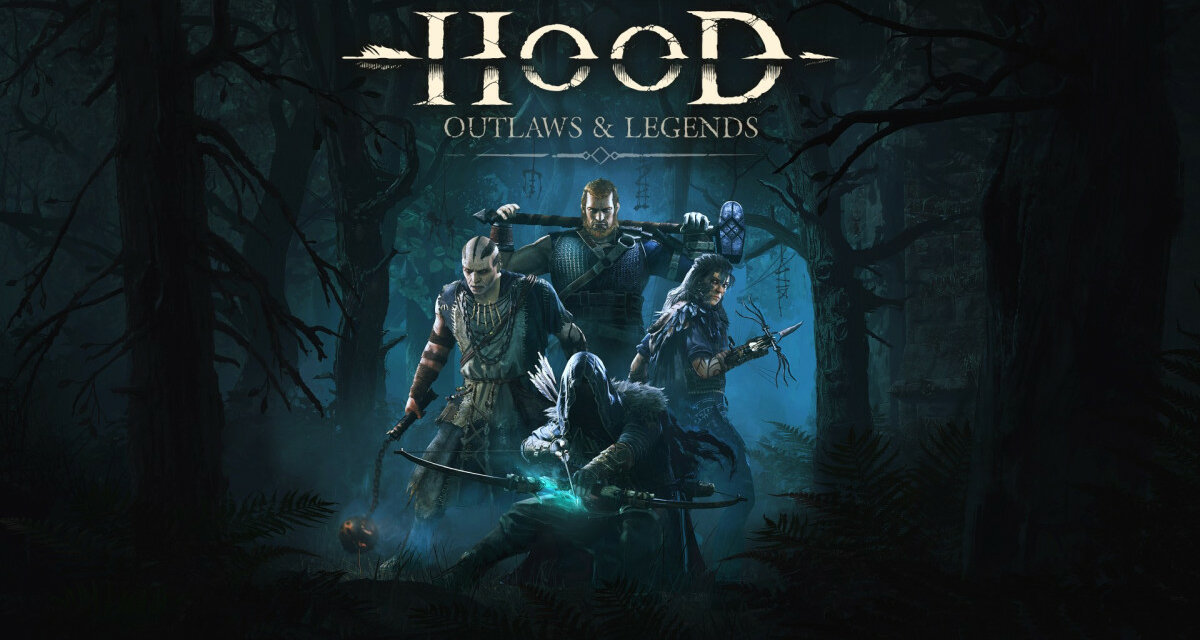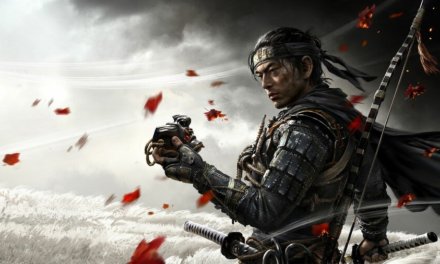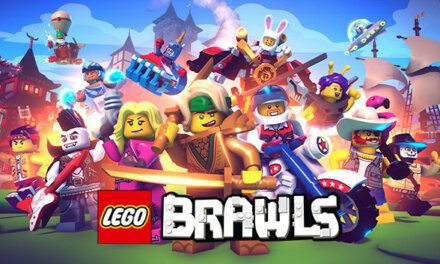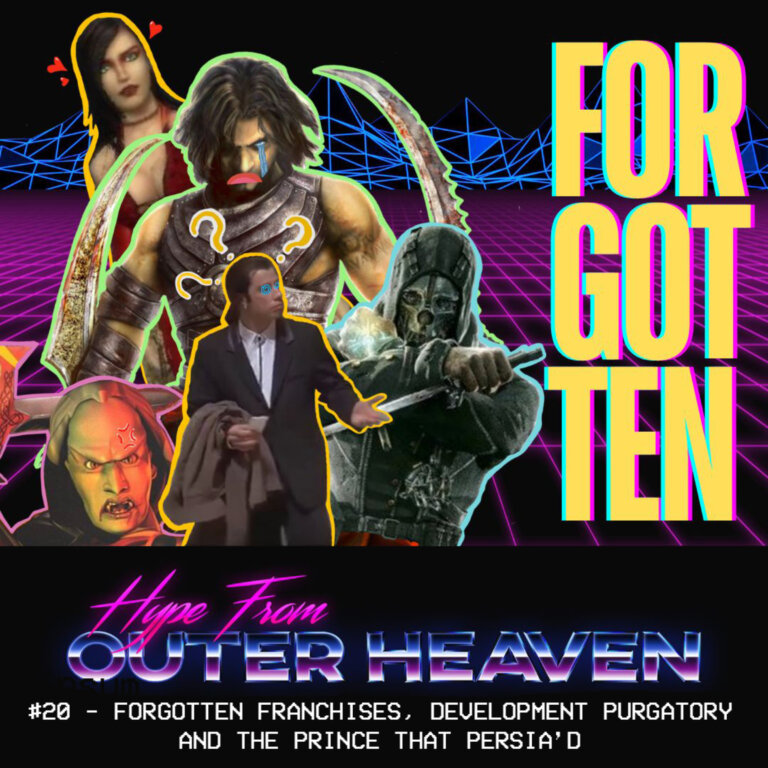A fantastic concept with a few too many glaring issues in its current state.
Hood: Outlaws and Legends is a multiplayer centric, Grimdark take on the famous tale of Robin Hood and the Merry Men. Two teams of four Outlaws must infiltrate a state-owned military encampment, pickpocket a key from the Sheriff of Nottingham, and steal the chest from inside the vault before the other team can stop you. Conceptually ground-breaking with excellent teamwork and gameplay mechanics, Hood appears to be a steal for the low price of £27; but a few hours of gameplay will reveal that it isn’t quite the full package it hopes to be.
Now don’t get me wrong; I have actually rather enjoyed a few matches of Hood and only feel that enjoyment growing as time goes on, but it is still hard to ignore some of the problems that I’ve found with the game thus far. Each match (though not officially) is essentially split into three phases, which I have dubbed Scouting, Stealing, and Winching. I tend to find the scouting phase of the game to be by far the most compelling, allowing for some truly stand out and memorable exercises of stealth, teamplay, and tactical coordination. This phase consists of your team’s synchronised advance toward the central military encampment on one of five interesting and environmentally diverse maps set across the UK. Taking out guards Assassin’s Creed style and avoiding detection is key as to avoid alerting both the A.I State soldiers and the enemy team to your position. A flawless execution at this stage is so very satisfying and nothing brings a smile to your face like witnessing two teammates taking down a patrol in-sync while your archer headshots a third guard keeping watch on the wall. Once your team has successfully infiltrated the outpost and located the Sheriff, the Stealing phase begins.
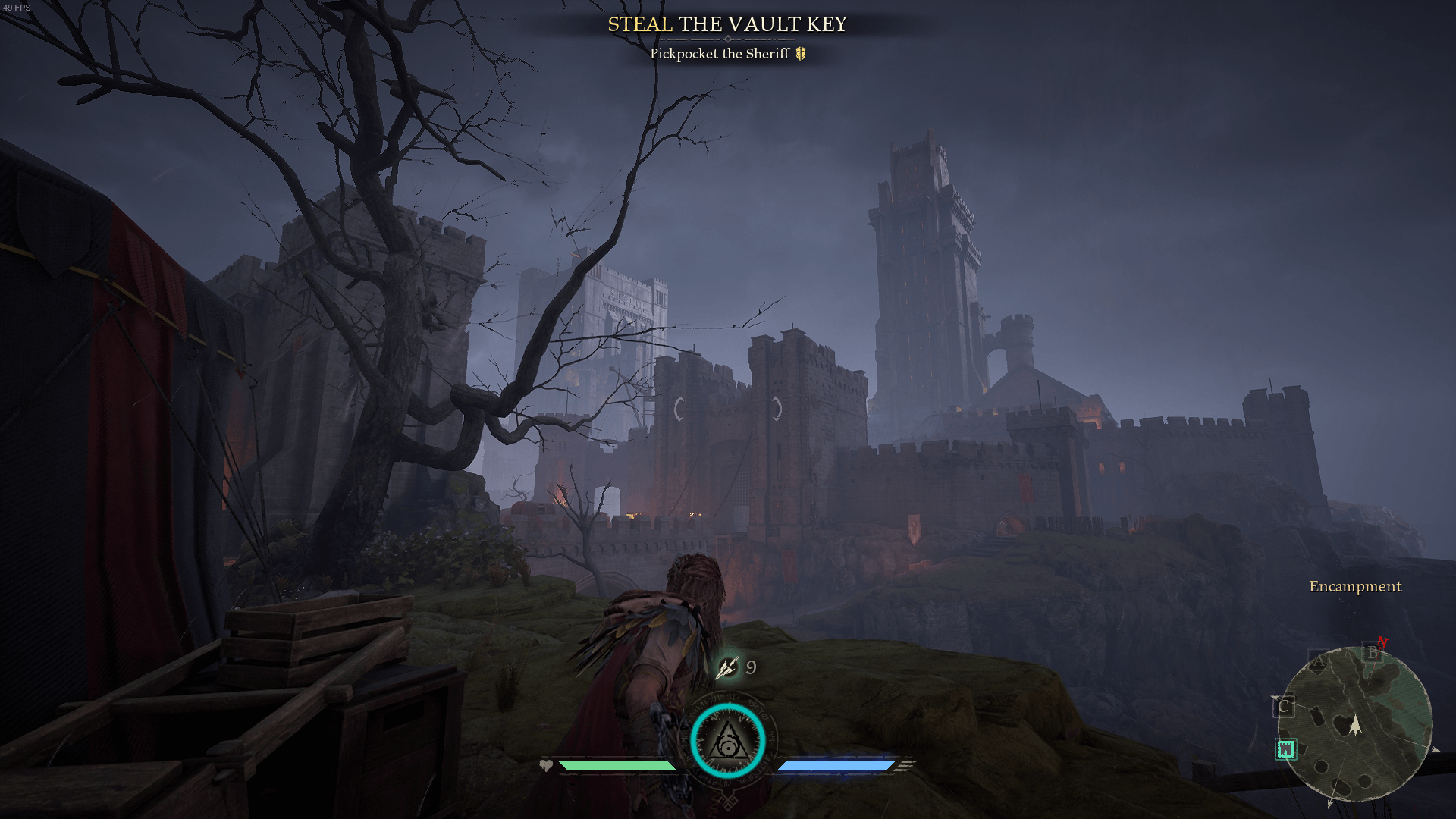
And unfortunately, so too do the issues. At this stage, your team must steal the key from the Sheriff, open the vault, take the chest, and get to the extraction point. Ignoring the fact that extracting the chest is a painfully slow experience, any character who is carrying the chest exerts distractingly loud grunts and cannot stealth, meaning that getting out undetected is nigh on impossible. Adding even more frustration is that once a player is seen carrying the chest, all nearby exits will be locked down, so your progress is stopped in its tracks, and the enemy team is alerted of your position. This is the stage at which the all-out brawls begin, and it will not stop until the game is completed.
Every player will, at one stage or another, find themselves caught in the same, distressing loop; engage one another, kill some NPC’s, attempt to carry the chest, die, respawn at the closest capture point, sprint towards the chest, repeat. Player to player combat is rather enjoyable and engaging but can really start to drag after 10 minutes of back and forth, rinse and repeat action. The two melee specialist characters (John and Tooke) also feel like they have a distinct advantage from this point of the game onwards, since they are able to deal massive damage with just a single hit of their hammer or mace and have their own set of skills to back up their punching prowess.
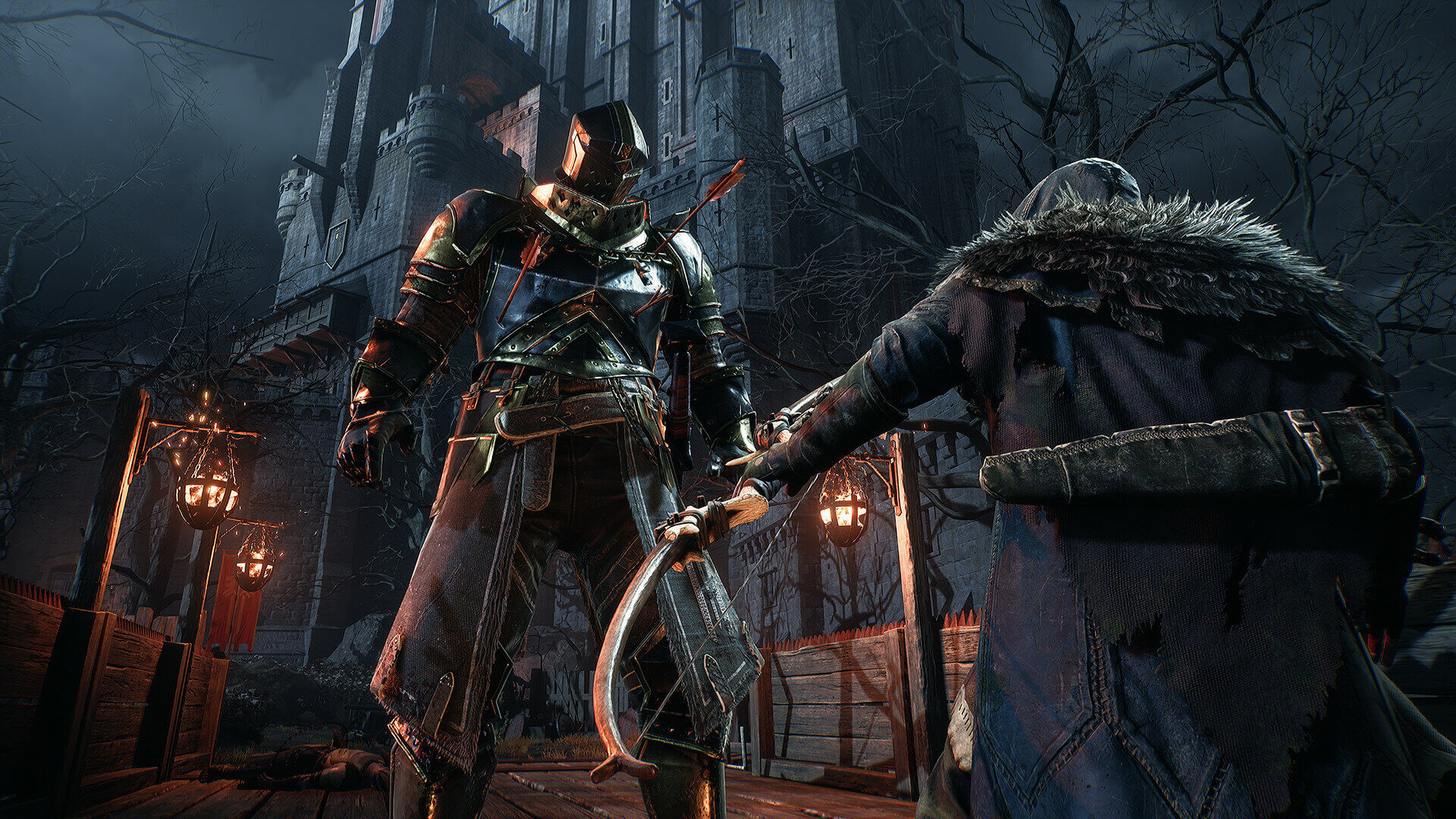
But even your character choice and all of their unique abilities won’t matter if the Sheriff catches wind of your plans and begins his slow, threatening march towards the chest. Though he walks as if his armour is made of pure tungsten, the Sheriff is completely unkillable and will one-shot you if you get close enough. This leads to some gameplay states in which neither team can make a breakthrough, especially during the winching phase. When the Sheriff stands on the objective, be it the chest or the winch, one player has to act as a distraction while the rest avoid them and complete the objective. This also then leaves the teams in a 3v4 state while the Sheriff is lead away. Though he can briefly be knocked down, a remarkable amount of damage is needed to do so, which often requires an investment of at least one player’s most powerful ability, also putting that team at a disadvantage for the near future.
The winching phase is the final stage of the game and by far the least enjoyable, in which the chest has reached the extraction point and the two teams fight to fully hoist the treasure out of the State’s reach. There is a progress bar with 6 checkpoints that must be filled to win the game and secure the treasure for your people. Once a checkpoint has been completed, the progress bar cannot fall below that point. This leads to an issue, however, as both teams share the same winch. This means that even if your team steal the key, open the vault, take the chest, reach the winch, AND complete 5 of the 6 checkpoints completely uncontested, the enemy team can simply steal the win by completing the final notch on the progress bar. It is a constant, back and forth struggle, with all members across both teams sprinting from their spawn point to kill as many enemies (players and otherwise) as possible before inevitably dying again.
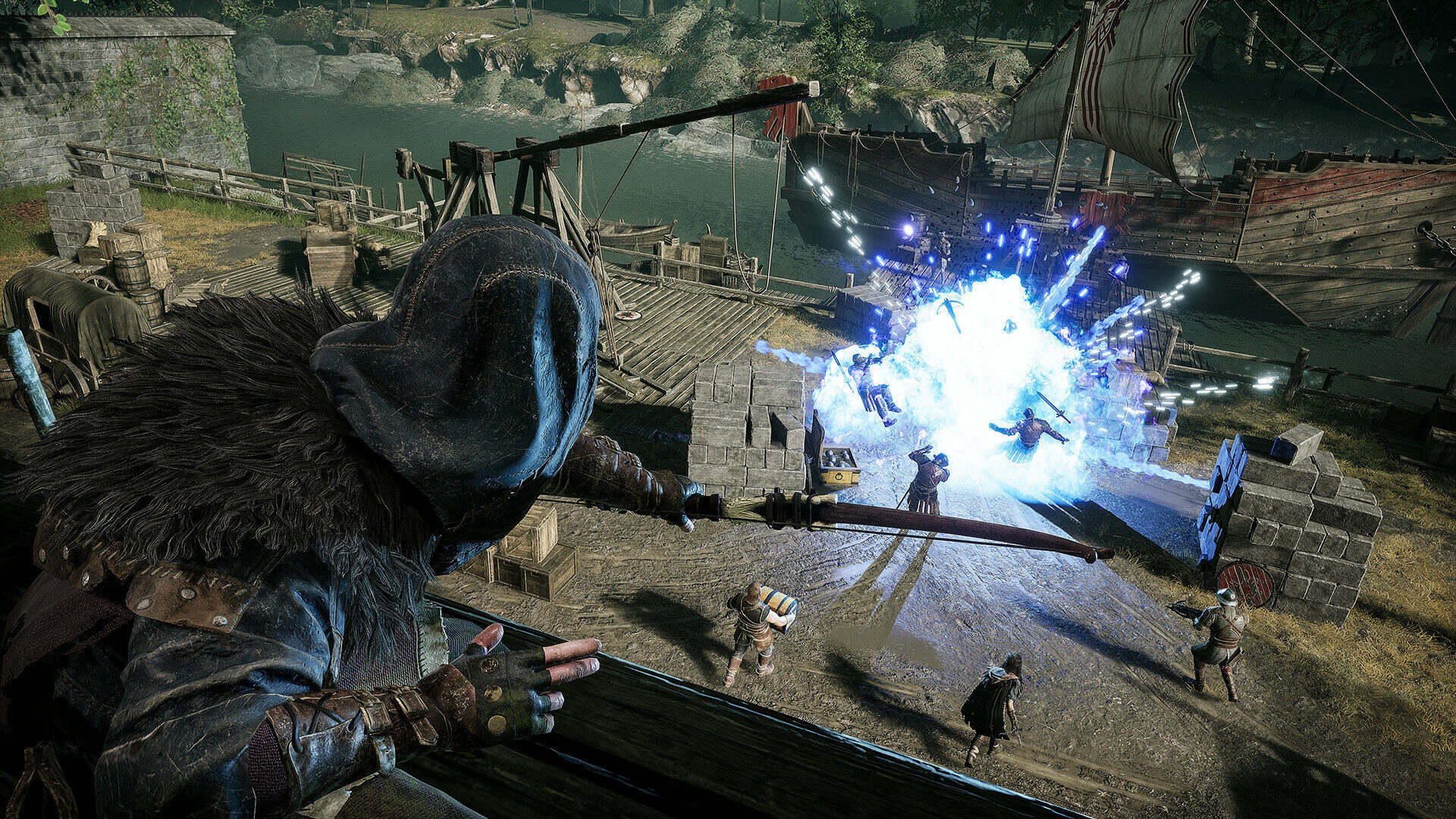
Hood is also a little shaky in terms of quality-of-life options. It feels like a console game that has been ported to PC, in the sense that you cannot rebind your keys, your field of view is fixed, and the graphics are a little underwhelming up close. The key-binding issue is especially present when you realise that ‘E’ is the default key for everything which can create some infuriating dilemmas. Imagine; you weave through the entire enemy team, sneaking through bushes and finally catching the player carrying the chest. You sneak up behind them and just as you’re about to assassinate them, they drop the chest. As you hit ‘E’ to assassinate, you slide past the enemy and start the awfully long animation of lifting the chest off the ground, giving the enemy player plenty of time to smack you in the back of the head with a mace. Yeah, it happens.
The NPCs of Hood have very limited dialogue options and behaviours, which often leaves them acting like Skyrim bandits; confident in their ability to determine that the arrow sticking out of their knee was, in fact, only the wind. There is no way to open the options menu in the pre-game lobby and there are no notifications or pop-ups for game invites as it doesn’t seem to link to Steam. The game is player-hosted rather than having dedicated servers, there is no skill-based matchmaking meaning your first few games will be rough, and despite that, matchmaking is still pretty slow in comparison to other multiplayer-only games of this generation.
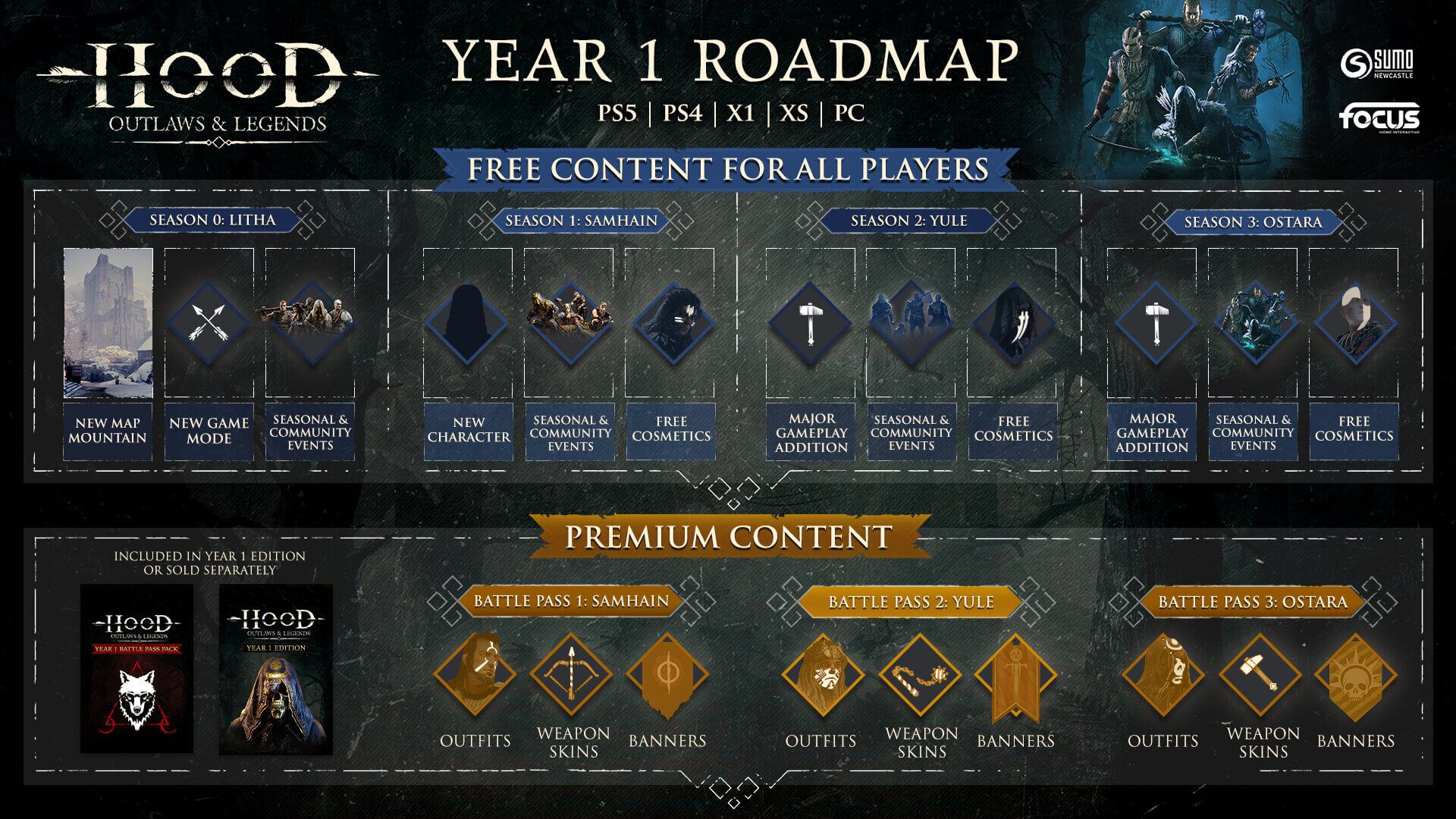
All of that being said, these listed above are fairly easy fixes, and we know that the developers are fully dedicated to providing plenty of free content for all players in the coming months, as detailed in the roadmap provided above. Yes, the game has its issues with balance and there are some problems with certain elements of gameplay, but if the development team are passionate about improving this game and growing it long into the future, I can see it really establishing itself among the greats.

